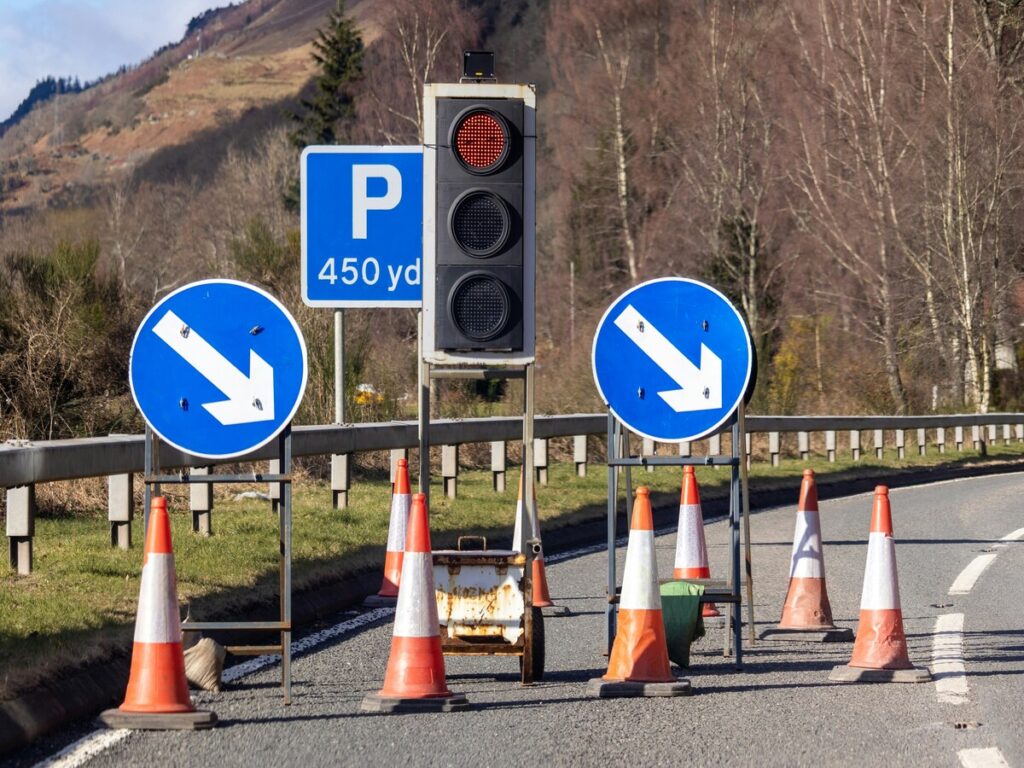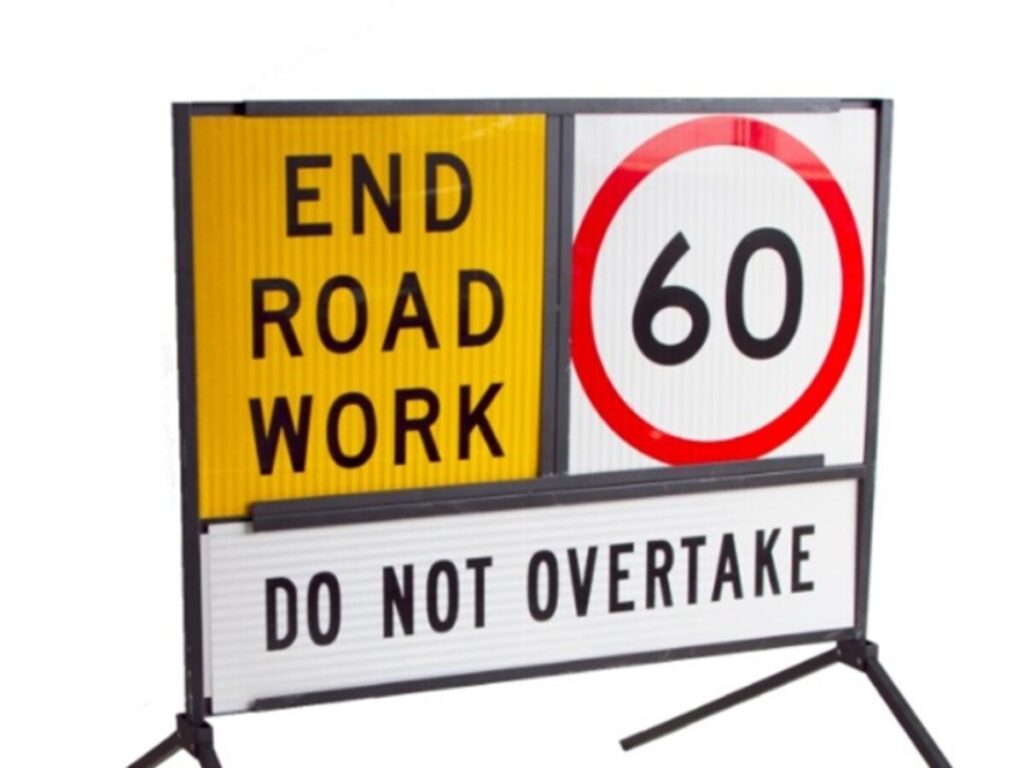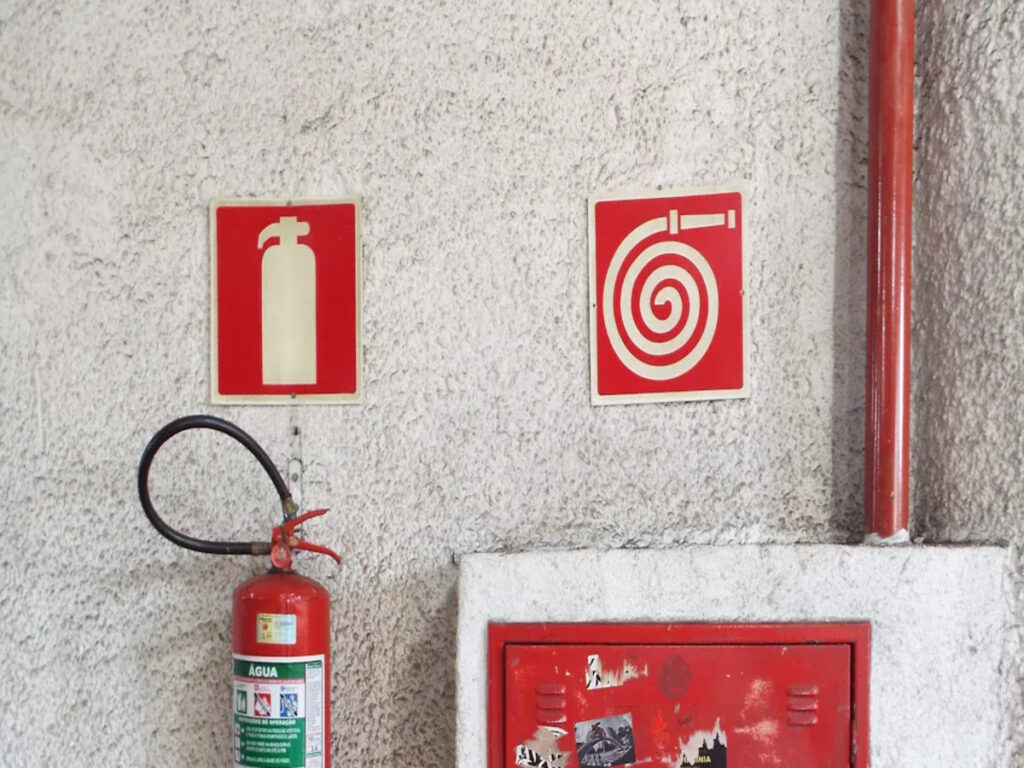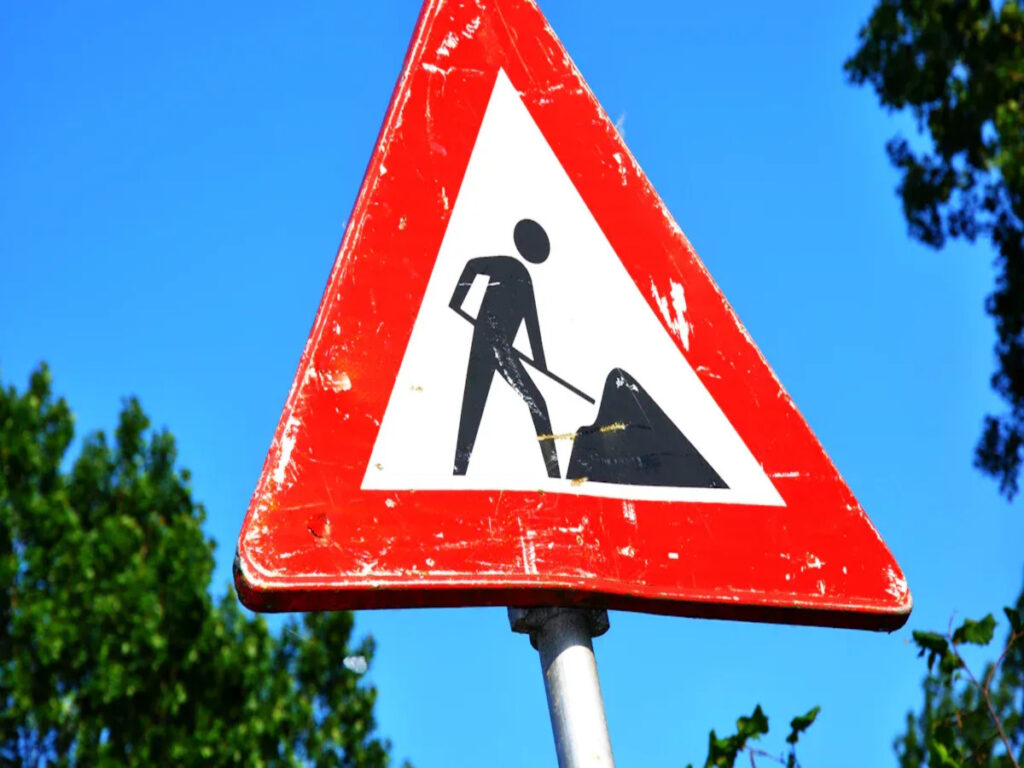
सड़क के संकेतों पर भित्तिचित्र ड्राइवरों के लिए खतरनाक हो सकते हैं. में 2022, लॉस एंजिल्स में श्रमिकों ने सफाई की 200,000 सार्वजनिक स्थानों से भित्तिचित्र टैग. इनमें से कई टैग ट्रैफ़िक संकेतों पर थे. बर्बरता महत्वपूर्ण संदेशों को कवर कर सकती है. यह लोगों को खतरे में डाल सकता है. एंटी-ग्रैफिटी कोटिंग्स संकेतों की रक्षा करने में मदद करते हैं. वे सफाई भी बहुत आसान बनाते हैं. ट्रैफ़िक साइन रखरखाव टीमों को सही कोटिंग लेने की आवश्यकता है. सभी उत्पाद एक ही तरह से काम नहीं करते हैं. मतभेदों को जानने से बर्बरता को रोकने में मदद मिल सकती है. यह सभी के लिए सड़कों को सुरक्षित रखने में भी मदद करता है.
वह कहाँ है ऑप्टट्रैफ़िक अंदर आता है. हम उच्च गुणवत्ता के विशेषज्ञ हैं, टिकाऊ यातायात संकेत तत्वों का सामना करने और बर्बरता का विरोध करने के लिए डिज़ाइन किए गए हैं. ऑप्ट्राफिक ट्रैफ़िक सुरक्षा संकेत उन्नत सामग्रियों के साथ बनाए जाते हैं जो भित्तिचित्रों और पहनने के खिलाफ उत्कृष्ट दृश्यता और लंबे समय तक चलने वाले संरक्षण दोनों प्रदान करते हैं. हमारे उत्पादों के साथ, आप यह सुनिश्चित कर सकते हैं कि आपके सड़क के संकेत स्पष्ट और प्रभावी रहें, यहां तक कि बर्बरता के सामने.
Optraffic कैसे के बारे में अधिक जानें बिक्री के लिए सुरक्षा संकेत सड़क सुरक्षा में सुधार करने में मदद कर सकते हैं और अपनी आवश्यकताओं के लिए सही समाधान चुनकर महंगा रखरखाव को रोक सकते हैं.
चाबी छीनना
- एंटी-ग्रैफिटी कोटिंग्स ट्रैफ़िक संकेतों को साफ रहने में मदद करते हैं. वे पेंट और मार्करों को चिपकाने से रोकते हैं. इससे संकेतों को साफ करना आसान हो जाता है. यह लोगों को संकेतों को बेहतर देखने में भी मदद करता है.
- पांच मुख्य प्रकार के कोटिंग्स हैं. ये बलिदान हैं, अर्ध-बलिदान, स्थायी, नैनो कोटिंग्स, और यूवी-इलाज. प्रत्येक प्रकार की अपनी ताकत और उपयोग होता है.
- स्थायी और नैनो-कोटिंग सबसे लंबे समय तक चलते हैं. उन्हें ज्यादा रखरखाव की आवश्यकता नहीं है. बलिदान कोटिंग्स में कम पैसा खर्च होता है. लेकिन उन्हें फिर से अधिक बार डालने की जरूरत है.
- सही कोटिंग चुनना संकेत की सामग्री पर निर्भर करता है. यह इस बात पर भी निर्भर करता है कि संकेत कहां है, मौसम, और बजट. यह लोगों को सुरक्षित रखने और पैसे बचाने में मदद करता है.
- पर्यावरण के लिए इको-फ्रेंडली कोटिंग्स अच्छे हैं. वे श्रमिकों की सुरक्षा में भी मदद करते हैं. ये कोटिंग्स संकेत साफ और देखने में आसान रखते हैं.
एंटी-ग्रेफिटी कोटिंग्स अवलोकन
एंटी-ग्रेफिटी कोटिंग्स क्या हैं
एंटी-ग्रेफिटी कोटिंग्स भित्तिचित्रों को सतहों से चिपके रहने से रोकने में मदद करें. ये कोटिंग्स ट्रैफ़िक संकेतों और अन्य चीजों पर एक ढाल बनाते हैं. अगर कोई पेंट या मार्कर का उपयोग करता है, शील्ड इसे रहने से रोकती है. श्रमिक चिन्ह को चोट पहुंचाए बिना निशान को साफ कर सकते हैं.
वैज्ञानिकों ने कई प्रकार के कोटिंग्स का परीक्षण किया है. कुछ बहुलक मोम-आधारित पायस के साथ बनाए जाते हैं. अन्य ऐक्रेलिक-फ्लूर किए गए कोपोलीमर-आधारित इमल्शन का उपयोग करते हैं. विशेषज्ञ इन कोटिंग्स में क्या है, इसका अध्ययन करने के लिए विशेष उपकरणों का उपयोग करते हैं. वैक्स-आधारित कोटिंग्स बहुत सारी सतहों पर काम करते हैं. लेकिन वे काम नहीं कर सकते हैं अगर सतह में कई छोटे छेद हैं. ऐक्रेलिक-फ्लूरोनेटेड कोटिंग्स अधिक सुरक्षा के लिए रेजिन और वैक्स मिक्स. दोनों प्रकार के संकेत साफ और देखने में आसान रहने में मदद करते हैं.
टिप्पणी: एंटी-ग्रैफिटी कोटिंग्स को पर्यावरण के लिए सुरक्षित और सार्वजनिक स्थानों पर उपयोग करने के लिए सरल बनाया जाता है.
वे कैसे काम करते हैं
कोटिंग्स ढाल की तरह काम करते हैं. वे पेंट रखते हैं, मार्कर, और अन्य भित्तिचित्र में भिगोने से. कुछ कोटिंग्स एक पतली बनाने के लिए नैनो टेक्नोलॉजी का उपयोग करते हैं, स्पष्ट परत. अन्य मोम या विशेष रेजिन का उपयोग करते हैं. ये परतें सतह को पानी और तेल के दागों का विरोध करती हैं.
अध्ययनों से पता चलता है कि पर्यावरण के अनुकूल कोटिंग्स वाटर-इन-ऑयल नैनोइमल्स का उपयोग करते हैं. ये नैनोइमल्स अच्छी तरह से फैलते हैं और चिन्ह को चोट पहुंचाए बिना भित्तिचित्रों को हटाने में मदद करते हैं. कोटिंग्स सतह को बदलते हैं इसलिए भित्तिचित्र चिपक नहीं जाता है. सफाई चालक दल गर्म पानी या विशेष क्लीनर का उपयोग कर सकते हैं, कोटिंग पर निर्भर करता है. अधिक समय तक, ये कोटिंग्स ड्राइवरों के लिए ट्रैफ़िक संकेतों को स्पष्ट और सुरक्षित रखने में मदद करते हैं.
एंटी-ग्रेफिटी कोटिंग्स के प्रकार
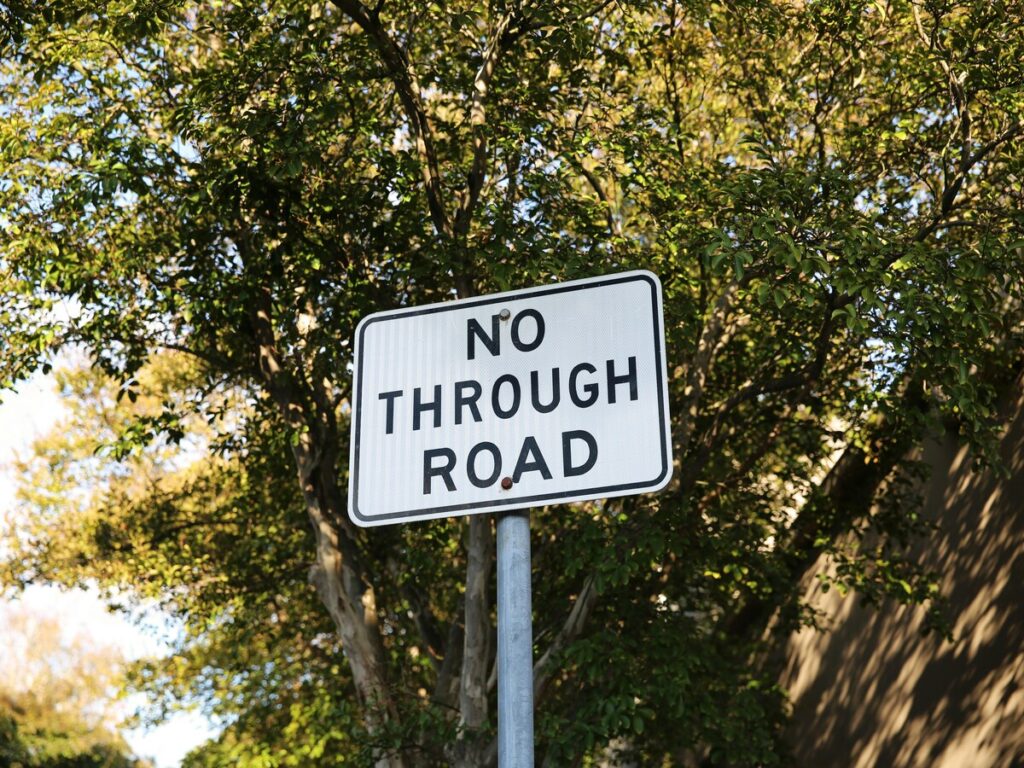
बलिदान कोटिंग्स
बलि कोटिंग्स ने एक ट्रैफ़िक साइन पर एक पतली ढाल डाली. ये कोटिंग्स मोम या पॉलिमर का उपयोग करते हैं जो संकेत के लिए हल्के से चिपकते हैं. अगर कोई भित्तिचित्र खींचता है, श्रमिक भित्तिचित्र और कोटिंग दोनों को धो सकते हैं. सफाई के बाद, श्रमिकों को एक नई परत पर रखना चाहिए.
आवेदन कैसे करें:
- सुनिश्चित करें कि चिन्ह साफ और सूखा है.
- एक स्प्रेयर का उपयोग करें, रोलर, या कोटिंग पर डालने के लिए ब्रश.
- किसी न किसी सतह को कम से कम दो कोट की आवश्यकता होती है.
- दूसरे को जोड़ने से पहले प्रत्येक कोट को सूखने दें.
पेशेवरों:
- कम पैसा.
- उपयोग करने और हटाने के लिए सरल.
- साइन को समान दिखता है.
दोष:
- हर सफाई के बाद एक नए कोट की जरूरत है.
- रखरखाव की लागत समय के साथ बढ़ जाती है.
सबसे अच्छा उपयोग मामले:
भित्ति चित्र, लकड़ी के संकेत, और बहुत सारी भित्तिचित्रों के साथ स्थान.
बख्शीश: बलि कोटिंग्स बहुत सारी भित्तिचित्रों के साथ स्पॉट के लिए अच्छे हैं और जहां तेजी से सफाई की आवश्यकता है.
अर्ध-बलिदान कोटिंग्स
अर्ध-बलिदान कोटिंग्स ऐक्रेलिक सामग्रियों का उपयोग करते हैं जो बलि से अधिक समय तक रहते हैं. साफ होने पर ये कोटिंग्स कुछ परतें खो देती हैं, लेकिन यह सब नहीं. श्रमिक भित्तिचित्रों को साफ करने के लिए गर्म पानी या उच्च दबाव वाली धुलाई का उपयोग कर सकते हैं. कुछ सफाई के बाद, एक नए कोट की जरूरत हो सकती है.
आवेदन कैसे करें:
- पहले सतह को साफ और सुखाएं.
- एक स्प्रेयर या रोलर के साथ परतों पर रखें.
- यह सुनिश्चित करने के लिए जाँच करें कि पूरा संकेत कवर किया गया है.
पेशेवरों:
- बलि कोटिंग्स से अधिक समय तक रहता है.
- पानी से सफाई करना आसान है.
- साइन की सतह पर कोमल.
दोष:
- कुछ सफाई के बाद एक नए कोट की जरूरत है.
- कभी -कभी रखरखाव की आवश्यकता होती है.
सबसे अच्छा उपयोग मामले:
पत्थर की दीवार, पुरानी इमारतें, और उन स्थानों पर जहां संकेतों को कोमल देखभाल की आवश्यकता होती है.
स्थायी कोटिंग्स
स्थायी कोटिंग्स, जिसे गैर-बलिदान कोटिंग्स भी कहा जाता है, कठिन होना, संकेत पर मजबूत ढाल. ये कोटिंग्स पॉलीयुरेथेन या फ्लोरिनेटेड हाइड्रोकार्बन जैसी चीजों का उपयोग करते हैं. कुछ प्रकार पेंट को छड़ी करने के लिए पेंट को कठिन बनाने के लिए सिलिकॉन का उपयोग करते हैं. श्रमिकों को केवल इन कोटिंग्स को एक बार रखने की आवश्यकता है.
आवेदन कैसे करें:
- चिन्ह को साफ और सूखा.
- कोटिंग पर डालने के लिए एक स्प्रेयर या ब्रश का उपयोग करें.
- एक कठिन परत बनाने के लिए इसे सूखने दें.
पेशेवरों:
- लंबे समय तक रक्षा करता है.
- सुस्त से चमकदार में फिनिश बदल सकते हैं.
- धातु पर काम करता है, प्लास्टिक, और अधिक.
दोष:
- हो सकता है कि साइन को शिनियर बना दिया जाए.
सबसे अच्छा उपयोग मामले:
पारगमन संकेत, सुरंगों, पुलों, और अंडरपास.
टिप्पणी: कुछ स्थायी कोटिंग्स, एपीवी इंजीनियर कोटिंग्स के विनागार्ड की तरह, मार्कर और कॉफी से दागों से बचाएं. वे यूवी किरणों को भी रोकते हैं और कवक को बढ़ने से रोकते हैं.
नैनो कोटिंग्स
नैनो-कोटिंग छोटे कणों का उपयोग करते हैं, सिलिका की तरह, एक मजबूत ढाल बनाने के लिए. ये कोटिंग्स सतह को पानी और तेल से दूर धकेलते हैं. पेंट और मार्कर इन सतहों से अच्छी तरह से नहीं चिपकते हैं. नैनो-कोटिंग बहुत पतली और लगभग अदृश्य हैं.
आवेदन कैसे करें:
- चिन्ह को साफ और सूखा.
- एक दिखावा के रूप में कोटिंग पर स्प्रे करें.
- इसे ढाल बनाने के लिए सूखने दें.
पेशेवरों:
- पानी और तेल भित्तिचित्र के खिलाफ अच्छी तरह से काम करता है.
- बहुत मजबूत और लंबे समय तक रहता है.
- साइन को नया दिखता रहता है.
दोष:
- अन्य कोटिंग्स की तुलना में अधिक लागत.
- कभी -कभी विशेष उपकरणों को रखने की आवश्यकता होती है.
सबसे अच्छा उपयोग मामले:
बड़ी परियोजनाएँ, मजबूत सुरक्षा की आवश्यकता वाले स्थान, और लुक के बारे में सख्त नियमों वाले क्षेत्र.
यूवी-क्यूरेबल कोटिंग्स
यूवी-क्यूरेबल कोटिंग्स विशेष रसायनों का उपयोग करते हैं जो यूवी प्रकाश के साथ कठोर हो जाते हैं. ये कोटिंग्स एक कठिन बनाते हैं, स्पष्ट परत जो भित्तिचित्रों से संकेत सुरक्षित रखती है. कोटिंग तेजी से सूख जाती है, इसलिए यह त्वरित नौकरियों के लिए अच्छा है.
आवेदन कैसे करें:
- चिन्ह को साफ और सूखा.
- कोटिंग पर डालने के लिए एक स्प्रेयर या रोलर का उपयोग करें.
- कोटिंग को कठिन बनाने के लिए यूवी प्रकाश का उपयोग करें.
पेशेवरों:
- सूख जाता है और जल्दी से कठोर होता है.
- खरोंच और क्षति के खिलाफ मजबूत.
- लंबे समय तक रक्षा करता है.
दोष:
- काम करने के लिए यूवी प्रकाश की आवश्यकता है.
- हर जगह के लिए अच्छा नहीं है.
सबसे अच्छा उपयोग मामले:
यूवी उपकरणों के साथ स्थान, व्यस्त क्षेत्र, और ऐसी परियोजनाएं जिन्हें तेजी से समाप्त करने की आवश्यकता है.
मेज़: एंटी-ग्रेफिटी कोटिंग प्रकारों की तुलना
| कोटिंग प्रकार | संघटन | अनुप्रयोग पद्धति | पेशेवरों | दोष | सबसे अच्छा उपयोग मामले |
|---|---|---|---|---|---|
| बलि | वैक्स या पॉलिमर | स्प्रे/रोलर/ब्रश | कम लागत, आसान हटाना | पुनर्मूल्यांकन की जरूरत है | भित्ति चित्र, लकड़ी, उच्चतर क्षेत्र |
| अर्ध-बलिदान | ऐक्रेलिक हाई-बिल्ड | स्तरित अनुप्रयोग | टिकाऊ, कोमल सफाई | मध्यम रखरखाव | ऐतिहासिक इमारतें, पत्थर की दीवार |
| स्थायी | पोलीयूरीथेन, फ्लोरोनेटेड, सिलिकॉन | एकल आवेदन | जादा देर तक टिके, समायोज्य खत्म | उपस्थिति बदल सकते हैं | पारगमन, सुरंगों, पुलों |
| नैनो कोटिंग्स | सिलिका नैनोपार्टिकल्स | pretreatment, फुहार | अत्यधिक प्रभावी, अदृश्य | उच्च लागत, विशेष उपकरण | उन्नत संरक्षण, सख्त उपस्थिति |
| यूवी का इलाज | यूवी-रिएक्टिव रसायन | स्प्रे/रोलर + यूवी लाइट | फास्ट क्योरिंग, मजबूत सुरक्षा | यूवी लाइट की जरूरत है | त्वरित परियोजनाएं, उच्च या ट्रैफ़िक क्षेत्र |
जबकि ट्रैफिक साइन की सतह की रक्षा करना महत्वपूर्ण है, यह याद रखना महत्वपूर्ण है ट्रैफिक साइन हार्डवेयरजैसे साइन पोल और कोष्ठक - भी तत्वों से सुरक्षा की आवश्यकता है. जंग-प्रतिरोधी कोटिंग्स ट्रैफिक साइन हार्डवेयर की दीर्घायु को बढ़ाने में महत्वपूर्ण भूमिका निभाते हैं, समय के साथ जंग और गिरावट को रोकना. इस बारे में अधिक जानने के लिए कि ये कोटिंग्स ट्रैफ़िक संकेतों की संरचनात्मक अखंडता को कैसे बनाए रखने में मदद करते हैं, हमारे ब्लॉग को देखें ट्रैफ़िक साइन हार्डवेयर की दीर्घायु पर संक्षारण प्रतिरोधी कोटिंग्स का प्रभाव.
रेटिंग और प्रदर्शन
भित्तिचित्र निष्कासन प्रभावशीलता
भित्तिचित्र हटाने की प्रभावशीलता का मतलब है कि कोटिंग्स कितनी अच्छी तरह से श्रमिकों को भित्तिचित्रों को साफ करने में मदद करते हैं. कुछ कोटिंग्स ने श्रमिकों को स्प्रे पेंट या मार्कर को पोंछने के लिए सिर्फ पानी का उपयोग किया. भित्तिचित्रों को हटाने के लिए अन्य कोटिंग्स को विशेष क्लीनर की आवश्यकता होती है. स्थायी कोटिंग्स श्रमिकों को कई बार उन्हें चोट पहुंचाए बिना संकेत दें. भित्तिचित्रों के साथ बलिदान कोटिंग्स बंद हो जाती हैं, इसलिए श्रमिकों को हर बार एक नई परत पर रखना होगा. नैनो-कोटिंग्स सतह को फिसलन बनाते हैं, तो भित्तिचित्र आसानी से बंद हो जाता है. यूवी-इलाज कोटिंग्स भी दागों को रोकते हैं और सफाई को जल्दी बनाते हैं.
बख्शीश: ऐसे संकेत जो समय और कम रखरखाव लागत को बचाने के लिए आसान हैं.
स्थायित्व और दीर्घायु
स्थायित्व का मतलब है कि ट्रैफ़िक संकेतों पर कब तक कोटिंग्स चलती हैं. स्थायी कोटिंग्स कई वर्षों तक संकेतों की रक्षा कर सकते हैं. नैनो-कोटिंग भी बहुत मजबूत हैं और कई सफाई के बाद काम करते रहते हैं. बलिदान कोटिंग्स को अक्सर फिर से डालने की आवश्यकता होती है, इसलिए वे लंबे समय तक नहीं रहते हैं. यूवी-क्यूरेबल कोटिंग्स एक कठिन परत बनाते हैं जो खरोंच और खराब मौसम के लिए खड़ी होती है. अर्ध-बलिदानों की तुलना में अर्ध-बलिदान कोटिंग्स लंबे समय तक चलती हैं, लेकिन अभी भी कुछ सफाई के बाद नई परतों की आवश्यकता है.
एक टेबल आपको यह देखने में मदद कर सकता है कि कोटिंग्स कब तक चलती हैं:
| कोटिंग प्रकार | स्थायित्व स्तर | लंबी उम्र (साल) |
|---|---|---|
| बलि | कम | 0.5 – 1 |
| अर्ध-बलिदान | मध्यम | 1 – 2 |
| स्थायी | उच्च | 5+ |
| नैनो कोटिंग्स | बहुत ऊँचा | 5+ |
| यूवी का इलाज | उच्च | 3 – 5 |
मौसम और यूवी प्रतिरोध
ट्रैफिक संकेत सूरज का सामना करते हैं, बारिश, बर्फ, और हर दिन हवा. कोटिंग्स को इन चीजों से संकेतों की रक्षा करनी चाहिए. स्थायी कोटिंग्स और नैनो-कोटिंग पानी को अवरुद्ध करने और यूवी किरणों को रोकने में अच्छे हैं. यूवी-क्यूरेबल कोटिंग्स भी धूप और खराब मौसम से संकेतों की रक्षा करते हैं. जब मौसम खुरदरा होता है तो बलि कोटिंग्स तेजी से पहनती हैं. अर्ध-बलिदान कोटिंग्स बेहतर रक्षा करते हैं लेकिन फिर भी तूफानों के बाद जांच की आवश्यकता है.
टिप्पणी: अच्छा मौसम और यूवी प्रतिरोध संकेतों को उज्ज्वल और पढ़ने में आसान रहने में मदद करता है.
दृश्यता पर प्रभाव
सड़क सुरक्षा के लिए दृश्यता महत्वपूर्ण है. कोटिंग्स को ट्रैफ़िक संकेतों के रंग या चमक को नहीं बदलना चाहिए. अधिकांश नैनो-कोटिंग्स और यूवी-क्यूबिलिटी कोटिंग्स स्पष्ट हैं और यह नहीं बदलते हैं कि ड्राइवर कैसे साइन देखते हैं. स्थायी कोटिंग्स संकेत चमकदार या सुस्त लग सकते हैं, लेकिन उन्हें संदेशों को अवरुद्ध नहीं करना चाहिए. बलिदान और अर्ध-बलिदान कोटिंग्स आमतौर पर साइन को समान दिखते रहते हैं. विशेषज्ञ यह सुनिश्चित करने के लिए कोटिंग्स का परीक्षण करते हैं कि वे संकेतों को देखना कठिन न बना दें.
पर्यावरण एवं सुरक्षा
कई शहर ऐसे कोटिंग्स चाहते हैं जो लोगों और ग्रह के लिए सुरक्षित हों. जल-आधारित कोटिंग्स और नैनो-कोटिंग्स में अक्सर कम हानिकारक रसायनों का उपयोग होता है. यूवी-इलाज योग्य कोटिंग्स तेजी से सूखती हैं और तेज गंध नहीं देती हैं. स्थायी कोटिंग्स में अधिक रसायनों का उपयोग हो सकता है, लेकिन कुछ ब्रांड अब सुरक्षित विकल्प चुनते हैं. लेप लगाते समय श्रमिकों को हमेशा सुरक्षा नियमों का पालन करना चाहिए. कुछ कोटिंग्स हरित भवन नियमों को पूरा करती हैं या निम्न स्तर की होती हैं वीओसी स्तर.
पुकारें: पर्यावरण-अनुकूल कोटिंग्स चुनने से श्रमिकों और पर्यावरण को सुरक्षित रखने में मदद मिलती है.
लागत क्षमता
लागत दक्षता का मतलब है कि समय के साथ कोटिंग्स का उपयोग करने में कितना पैसा लगता है. यज्ञ लेप की लागत पहले कम होती है लेकिन इसे बार-बार लगाना पड़ता है. स्थायी कोटिंग्स और नैनो-कोटिंग्स की शुरुआत शुरू में अधिक होती है लेकिन लंबे समय तक और कम काम की जरूरत होती है. UV-CABERY कोटिंग्स पैसे बचाते हैं क्योंकि वे तेजी से सूखते हैं और श्रमिक जल्द ही खत्म हो जाते हैं. अर्ध-बलिदान कोटिंग्स कीमत के लिए बीच में हैं और उन्हें कितना काम चाहिए. शहर और एजेंसियां कोटिंग लेने से पहले कुल लागत को देखते हैं.
लागत दक्षता के लिए एक सरल सूची:
- बलि: पहली बार में सस्ता, बाद में लागत
- अर्ध-बलिदान: मध्यम मूल्य, कुछ रखरखाव की जरूरत है
- स्थायी: पहले महंगा, समय के साथ सस्ता
- नैनो कोटिंग्स: उच्च कीमत, बहुत कम रखरखाव
- यूवी का इलाज: मध्यम से उच्च कीमत, तेजी से सुखाने के साथ श्रम बचाता है
उद्योग मानक अनुपालन
ट्रैफ़िक साइन कोटिंग्स को कुछ नियमों का पालन करना चाहिए. संयुक्त राज्य अमेरिका में, the MUTCD संकेतों के लिए मानकों को निर्धारित करता है. यूरोप एन का उपयोग करता है 12899. कई कोटिंग्स भी आईएसओ का अनुसरण करते हैं 9001 गुणवत्ता के लिए. ये नियम इस बात की जांच करते हैं कि कोटिंग्स कितनी अच्छी तरह से काम करते हैं, वे कब तक चलते हैं, और अगर वे सुरक्षित हैं. एजेंसियां प्रयोगशालाओं और बाहर में कोटिंग्स का परीक्षण करती हैं. केवल इन परीक्षणों को पास करने वाले कोटिंग्स का उपयोग सार्वजनिक सड़कों पर किया जा सकता है.
उसी प्रकार, जब यह साइन फ्रेम की बात आती है जो इन लेपित संकेतों को पकड़ते हैं, यह सुनिश्चित करने के लिए महत्वपूर्ण है कि वे आवश्यक मानकों का अनुपालन करें. पोर्टेबल ट्रैफिक साइन फ्रेम्स, उदाहरण के लिए, सड़क पर सुरक्षा और स्थायित्व सुनिश्चित करने के लिए विशिष्ट दिशानिर्देशों को पूरा करना चाहिए. यह समझने के लिए कि ये फ्रेम MUTCD आवश्यकताओं के साथ कैसे संरेखित करते हैं, हमारे ब्लॉग पर एक नज़र डालें क्या पोर्टेबल ट्रैफ़िक साइन फ्रेम्स Mutcd आज्ञाकारी बनाता है?
तुलना सारांश
एक नज़र में कोटिंग प्रकार
एंटी-ग्रैफिटी कोटिंग्स ट्रैफ़िक संकेतों को सुरक्षित रखने में मदद करते हैं. प्रत्येक प्रकार अपने तरीके से काम करता है. कुछ लंबे समय तक, जबकि अन्य को साफ करना आसान है. स्थायी कोटिंग्स, पॉलीयुरेथेन की तरह, एक कठिन ढाल बनाओ. वे भित्तिचित्र को रोकते हैं और खराब मौसम से बचाते हैं. बलिदान कोटिंग्स एक परत बनाने के लिए माइक्रो मोम का उपयोग करें. श्रमिक इस परत को भित्तिचित्र से धोते हैं. अर्ध-बलिदान कोटिंग्स मजबूत हैं लेकिन फिर से डालने में आसान हैं. नैनो-कोटिंग्स पानी और तेल को दूर करने के लिए नई तकनीक का उपयोग करते हैं. यह संकेत साफ रखता है. UV-CABURATE कोटिंग्स तेजी से सूखी और व्यस्त स्थानों में अच्छी तरह से काम करते हैं.
कोटिंग्स लेने के बारे में सोचने के लिए यहां कुछ बातें हैं:
- स्थायी कोटिंग्स सबसे लंबे समय तक संकेत देते हैं और कम नए कोट की जरूरत है.
- बलि कोटिंग्स की लागत कम है लेकिन अधिक देखभाल की आवश्यकता है.
- नैनो-कोटिंग्स और यूवी-इलाज कोटिंग्स कठिन मौसम में महान काम करते हैं.
- यह महत्वपूर्ण है कि संकेतों को साफ करना और अपना रंग रखना आसान है.
टिप्पणी: एक स्टीरियोमाइक्रोस्कोप और रंग चार्ट के चित्र बताते हैं कि सफाई के बाद स्थायी कोटिंग्स थोड़ा पीछे रह सकते हैं. बलिदान कोटिंग्स भित्तिचित्रों और कोटिंग दोनों को बंद कर देते हैं. दोनों प्रकार के रंग में परिवर्तन छोटे रखते हैं, इसलिए संकेत अभी भी उपयोग करने के लिए सुरक्षित हैं.
रेटिंग टेबल
नीचे दी गई तालिका से पता चलता है कि अलग-अलग एंटी-ग्रेफिटी कोटिंग्स कैसे काम करते हैं. यह उन चीजों को देखता है जैसे वे पानी को कितनी अच्छी तरह से धक्का देते हैं, यदि रंग बदल जाता है, उन्हें साफ करना कितना आसान है, और वे कितने समय तक चलते हैं. ये तथ्य श्रमिकों को अपनी नौकरी के लिए सबसे अच्छा कोटिंग चुनने में मदद करते हैं.
| संपत्ति | स्थायी कोटिंग्स (पोलीयूरीथेन) | बलिदान कोटिंग्स (माइक्रो वैक्स) | नैनो कोटिंग्स | यूवी-क्यूरेबल कोटिंग्स |
|---|---|---|---|---|
| जल घृणा (संपर्क कोण °) | 100-105 | 87-101 | 105+ | 100+ |
| रंग परिवर्तन (ΔE*) | 5-11 | ≤5 | ≤3 | ≤4 |
| सफाई दक्षता | उच्च (ब्रश, कुछ अवशेष) | बहुत ऊँचा (भित्तिचित्र के साथ हटा दिया गया) | बहुत ऊँचा | उच्च |
| अपक्षय स्थायित्व | अच्छा, उम्र बढ़ने के बाद कुछ नुकसान | मध्यम, बलुआ पत्थर पर पुनरावृत्ति खो देता है | उत्कृष्ट | बहुत अच्छा |
| रखरखाव आवृत्ति | कम | उच्च | बहुत कम | कम |
| समग्र प्रदर्शन | उच्च | मध्यम | बहुत ऊँचा | उच्च |
बख्शीश: रखरखाव टीमों को रेटिंग और चित्र दोनों को देखना चाहिए. यह उन्हें यह देखने में मदद करता है कि बहुत सफाई और खराब मौसम के बाद कोटिंग्स कैसे पकड़ते हैं.
ट्रैफ़िक साइन रखरखाव के लिए चुनना
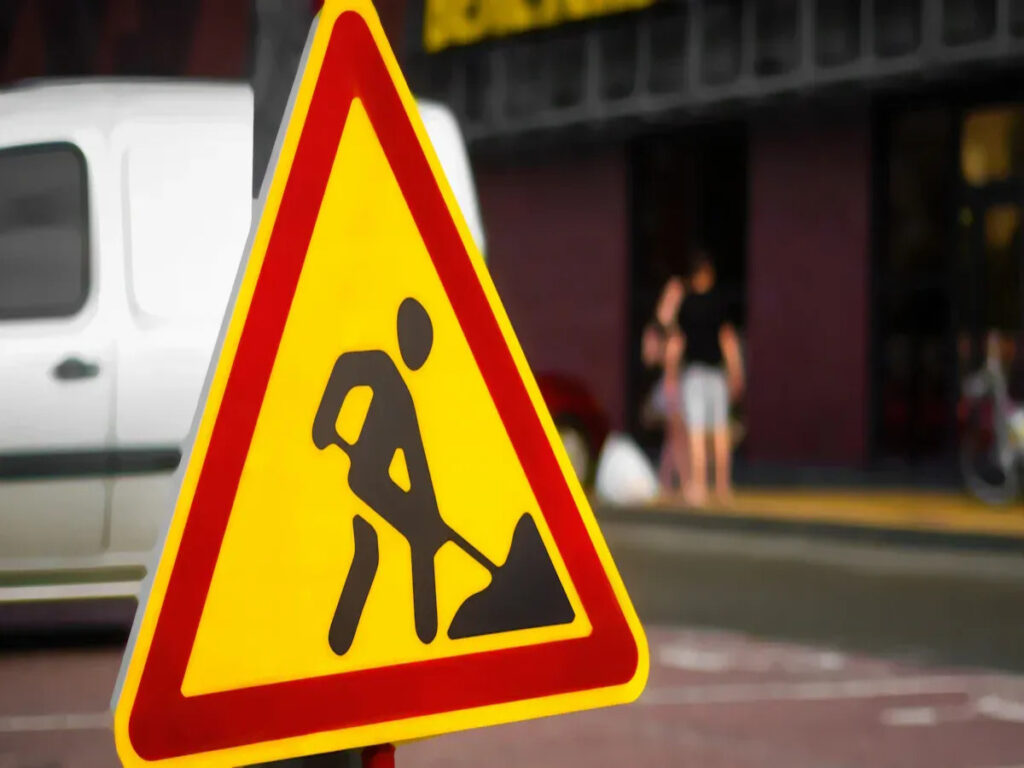
साइन सामग्री और स्थान का आकलन करना
ट्रैफ़िक के संकेत एल्यूमीनियम जैसी चीजों से किए जाते हैं, इस्पात, या प्लास्टिक. कुछ कोटिंग्स चिकनी धातु के संकेतों पर बेहतर काम करते हैं. अन्य कोटिंग्स मोटे सतहों की अधिक रक्षा करते हैं. शहरों में अक्सर देश की सड़कों की तुलना में अधिक भित्तिचित्र होते हैं. ग्रामीण सड़कों को अधिक बारिश होती है, बर्फ, और सूर्य. टीमों को यह देखना चाहिए कि कोटिंग लेने से पहले साइन कहां है. व्यस्त सड़कों के पास संकेतों को मजबूत कोटिंग्स की आवश्यकता है. इन कोटिंग्स को भित्तिचित्र और प्रदूषण से लड़ना चाहिए. देश में, कोटिंग्स को खराब मौसम के लिए खड़ा होना चाहिए. टीमों को कोटिंग को साइन की सामग्री और उसके स्थान से मिलान करना चाहिए.
बख्शीश: पहले एक छोटे से स्थान का परीक्षण करें कि कोटिंग साइन के साथ कैसे काम करती है.
रखरखाव और लागत विचार
टीमों को यह सोचने की जरूरत है कि वे कितनी बार संकेतों को साफ करते हैं. बलिदान कोटिंग्स पहले सस्ते हैं, लेकिन फिर से अक्सर डालने की जरूरत है. स्थायी कोटिंग्स लंबे समय तक चलती हैं और कम काम की आवश्यकता होती है. नैनो-कोटिंग्स और यूवी-इलाज योग्य कोटिंग्स समय के साथ पैसे बचा सकती हैं. इन्हें ज्यादा रखरखाव की जरूरत नहीं होती. टीमों को कुल लागत देखनी चाहिए, सिर्फ कोटिंग की कीमत नहीं. श्रम, सफाई की आपूर्ति, और समय सब मायने रखता है. एक तालिका टीमों को उनकी पसंद की तुलना करने में मदद कर सकती है:
| कोटिंग प्रकार | अपफ्रंट लागत | रखरखाव की जरूरत है | दीर्घकालिक बचत |
|---|---|---|---|
| बलि | कम | उच्च | कम |
| स्थायी | उच्च | कम | उच्च |
| नैनो कोटिंग्स | उच्च | बहुत कम | उच्च |
| यूवी का इलाज | मध्यम | कम | मध्यम |
आवश्यकताओं के अनुरूप कोटिंग
प्रत्येक प्रोजेक्ट अलग होता है और उसे अपनी योजना की आवश्यकता होती है. शहरों में, स्थायी या नैनो-कोटिंग्स सबसे अच्छा काम करती हैं. वे बहुत सारी भित्तिचित्रों और व्यस्त सड़कों को संभालते हैं. ग्रामीण स्थानों को ऐसे कोटिंग्स की आवश्यकता होती है जो मौसम से लड़ सकें और कम देखभाल की आवश्यकता हो. पर्यावरण-अनुकूल परियोजनाओं में जल-आधारित या कम-वीओसी कोटिंग्स का उपयोग करना चाहिए. टीमों को चिन्ह के स्थान के आधार पर कोटिंग चुननी चाहिए, यह किस चीज से बना है, और इसे कितनी बार साफ किया जाता है. इससे सभी के लिए संकेतों को स्पष्ट और सुरक्षित रखने में मदद मिलती है.
टिप्पणी: सही कोटिंग चुनने से पैसे की बचत होती है और सड़कें सुरक्षित रहती हैं.
मामले का अध्ययन
शहरी अनुप्रयोग
शहरों को हर दिन संकेतों पर भित्तिचित्रों की समस्या है. न्यूयॉर्क शहर में, टीमें व्यस्त सड़कों पर स्थायी कोटिंग्स का उपयोग करती हैं. ये कोटिंग्स श्रमिकों को भित्तिचित्रों को तेजी से साफ करने में मदद करते हैं. कई सफाई के बाद पढ़ने के लिए संकेत आसान रहते हैं. शिकागो में, क्रू ने स्कूलों और पार्कों के पास नैनो-कोटिंग्स को संकेतों पर रखा. ये कोटिंग्स स्प्रे पेंट को छड़ी करने के लिए कठिन बनाते हैं. श्रमिक भित्तिचित्रों को धोने के लिए पानी और साबुन का उपयोग करते हैं. शहर पैसे बचाता है क्योंकि संकेत लंबे समय तक चलते हैं और इसे बदलने की आवश्यकता नहीं है.
बख्शीश: शहरों को कोटिंग्स की आवश्यकता होती है जो भित्तिचित्र और प्रदूषण दोनों को रोकते हैं.
राजमार्ग और ग्रामीण उपयोग
राजमार्ग और देश की सड़कों को कठिन कोटिंग्स की आवश्यकता है. टेक्सास में, टीमें राजमार्ग के संकेतों पर यूवी-इलाज कोटिंग्स का उपयोग करती हैं. ये कोटिंग्स तेजी से सूखती हैं और सूरज और बारिश से संकेत देती हैं. ओरेगन में, चालक दल जंगलों के पास संकेतों पर अर्ध-बलिदान कोटिंग्स का उपयोग करते हैं. ये कोटिंग्स सफाई भित्तिचित्रों को आसान बनाते हैं और मौसम से बचाते हैं. टीमों का कहना है कि इन कोटिंग्स का मतलब है कि वे कम संकेतों को प्रतिस्थापित करते हैं. देश में, कम श्रमिक हैं, इतने लंबे समय तक चलने वाले कोटिंग्स समय बचाते हैं.
- राजमार्ग: त्वरित संरक्षण के लिए यूवी-इलाज कोटिंग्स
- ग्रामीण सड़कें: आसान सफाई के लिए अर्ध-बलिदान कोटिंग्स
पर्यावरण के अनुकूल समाधान
कुछ शहर ऐसे कोटिंग्स चाहते हैं जो पर्यावरण के लिए अच्छे हों. सैन फ्रांसिस्को में, टीमें नए संकेतों पर कम वीओसी के साथ पानी-आधारित कोटिंग्स का उपयोग करती हैं. ये कोटिंग्स खराब रसायनों को हवा से बाहर रखती हैं. श्रमिकों का कहना है कि ये कोटिंग्स भित्तिचित्रों और मौसम के खिलाफ अच्छी तरह से काम करती हैं. सिएटल में, चालक दल प्राकृतिक चीजों से बने नैनो-कोटिंग की कोशिश करते हैं. ये कोटिंग्स भित्तिचित्रों को तोड़ने के लिए धूप का उपयोग करते हैं. पर्यावरण के अनुकूल कोटिंग्स शहरों को हरे लक्ष्यों तक पहुंचने और श्रमिकों को सुरक्षित रखने में मदद करते हैं.
| शहर | कोटिंग प्रकार | फ़ायदा |
|---|---|---|
| सैन फ्रांसिस्को | वाटर बेस्ड | कम आप, हवा के लिए सुरक्षित |
| सिएटल | नैनो कोटिंग | धूप का उपयोग करता है, पर्यावरण के अनुकूल |
टिप्पणी: पर्यावरण के अनुकूल कोटिंग्स लोगों को सुरक्षित रखने और ग्रह की रक्षा करने में मदद करते हैं.
चुनौतियां और सीमाएँ
अनुप्रयोग जटिलता
कुछ एंटी-ग्रेफिटी कोटिंग्स को रखना मुश्किल है. कुछ कोटिंग्स, पॉलीयूरिया की तरह, विशेष स्प्रे टूल्स की जरूरत है. श्रमिकों को सीखना चाहिए कि इन उपकरणों का सुरक्षित रूप से उपयोग कैसे करें. यह छोटी टीमों या छोटे प्रशिक्षण के साथ स्थानों के लिए कठिन हो सकता है. फास्ट कोटिंग बड़ी नौकरियों के लिए अच्छा है. लेकिन विशेष गियर की आवश्यकता छोटी परियोजनाओं को धीमा कर सकती है. एक अध्ययन में पाया गया कि नैनो-सिलिका कोटिंग्स ने भित्तिचित्रों के खिलाफ संकेत मजबूत किए. लेकिन शुरुआती संस्करण कमजोर थे और बेहतर होने के लिए अधिक काम की आवश्यकता थी.
बख्शीश: एक परियोजना से पहले प्रशिक्षण श्रमिकों ने उन्हें एक बेहतर काम करने में मदद की और कोटिंग्स को अच्छी तरह से काम किया.
पर्यावरणीय प्रभाव
कई शहर कोटिंग्स चाहते हैं जो प्रकृति के लिए सुरक्षित हों. पॉलीयूरिया कोटिंग्स मुफ्त वोक्स नहीं देते हैं. यह उन्हें हरी परियोजनाओं के लिए अच्छा बनाता है. कुछ कोटिंग्स हवा और मिट्टी की रक्षा के लिए पानी-आधारित सूत्रों का उपयोग करते हैं. कम VOCs के साथ कोटिंग्स चुनने से श्रमिकों और पृथ्वी को सुरक्षित रखा जाता है. लेकिन सभी कोटिंग्स सुरक्षित नहीं हैं, इसलिए टीमों को खरीदने से पहले लेबल की जांच करनी चाहिए.
| सफलता का मंत्र | विवरण |
|---|---|
| पर्यावरणीय प्रभाव | पॉलीयूरिया कोटिंग्स में कोई मुफ्त VOCS नहीं है, इसलिए वे पर्यावरण के लिए बेहतर हैं. |
रखरखाव और पुनर्मूल्यांकन
कितनी बार कोटिंग्स को देखभाल की आवश्यकता होती है, उपयोग किए जाने वाले प्रकार पर निर्भर करता है. प्रत्येक सफाई के बाद बलि कोटिंग्स को फिर से रखा जाना चाहिए. स्थायी कोटिंग्स लंबे समय तक चलती हैं और कम काम की आवश्यकता होती है. पॉलीयूरिया कोटिंग्स सफाई को आसान बनाते हैं और समय बचाते हैं. टीमों को उन्हें अच्छी तरह से काम करने के लिए अक्सर संकेतों की जांच करनी चाहिए. मौसम, प्रदूषण, और ट्रैफ़िक बदल सकता है कि कोटिंग्स को कितनी बार देखभाल की आवश्यकता होती है.
टिप्पणी: आगे की योजना कोटिंग्स को लंबे समय तक चलने में मदद करता है और पढ़ने में आसान संकेत देता है.
लागत बनाम. प्रदर्शन
टीमों को लागत दोनों के बारे में सोचना चाहिए और कोटिंग्स कितनी अच्छी तरह से काम करते हैं. कुछ कोटिंग्स पहली बार में सस्ते हैं, लेकिन अक्सर फिर से डालने की जरूरत है. अन्य, पॉलीयूरिया या नैनो-आधारित कोटिंग्स की तरह, अधिक लागत लेकिन लंबे समय तक रहता है और बेहतर काम करता है. टीमें अपने पैसे और जरूरतों के लिए सबसे अच्छा लेने के लिए एक लागत-लाभ अध्ययन का उपयोग कर सकती हैं. कब तक कोटिंग्स तक चलते हैं, उन्हें साफ करना कितना आसान है, और अगर वे पर्यावरण के लिए सुरक्षित हैं तो सभी मामले.
पुकारें: कोटिंग्स जो अच्छी तरह से काम करते हैं, वे बाद में पैसे बचा सकते हैं कि कितनी देखभाल और प्रतिस्थापन की आवश्यकता है.
सही एंटी-ग्रेफिटी कोटिंग्स को चुनने से ट्रैफ़िक के संकेत सुरक्षित और देखने में आसान होते हैं. प्रत्येक कोटिंग प्रकार की सफाई के लिए अपने अच्छे अंक हैं, मौसम, और लागत. शहर, राजमार्ग, और स्कूल उन कोटिंग्स का उपयोग करते हैं जो कई सफाई के माध्यम से चलते हैं. ये कोटिंग्स भी प्रदूषण से संकेतों की रक्षा करते हैं, यूवी किरणें, और पानी. विशेषज्ञों का कहना है कि कोटिंग्स सफाई कर सकते हैं 40% तेजी से और पैसे बचाओ. हर कोटिंग हर चिन्ह पर अच्छी तरह से काम नहीं करती है. टीमों को कोटिंग्स की कोशिश करनी चाहिए, रेटिंग देखें, और संकेतों के लिए नियमों का पालन करें.
अधिक जानकारी के लिए, सार्वजनिक स्थानों के लिए कोटिंग्स के बारे में क्षेत्र अध्ययन और विशेषज्ञ युक्तियों की जाँच करें.
- फील्ड स्टडीज शो कोटिंग्स समय और पैसे दोनों को बचाने में मदद करते हैं.
- विशेषज्ञों का कहना है कि उनका उपयोग करने से पहले प्रत्येक स्थान पर कोटिंग्स का परीक्षण करने के लिए.
- कोटिंग्स का उपयोग करने से रसायनों और पानी में कटौती करके ग्रह को मदद मिलती है.
अक्सर पूछे जाने वाले प्रश्न
ट्रैफ़िक संकेतों पर एंटी-ग्रैफिटी कोटिंग्स का मुख्य उद्देश्य क्या है?
एंटी-ग्रैफिटी कोटिंग्स भित्तिचित्रों से यातायात संकेतों की रक्षा करने में मदद करते हैं. वे पेंट और मार्करों को साइन से चिपके रहने से रोकते हैं. इससे श्रमिकों के लिए संकेतों को साफ करना आसान हो जाता है. ये कोटिंग्स ड्राइवरों को सड़क पर महत्वपूर्ण संदेश देखने में मदद करते हैं.
कितनी बार रखरखाव टीमों को एंटी-ग्रेफिटी कोटिंग्स को फिर से लागू करना चाहिए?
कितनी बार टीमें नई कोटिंग जोड़ती हैं, प्रकार पर निर्भर करती है. प्रत्येक सफाई के बाद बलि कोटिंग्स को एक नई परत की आवश्यकता होती है. स्थायी और नैनो-कोटिंग्स वर्षों तक रह सकते हैं. टीमों को अक्सर यह जानने के लिए संकेतों की जांच करनी चाहिए कि अधिक क्या जोड़ना है.
क्या एंटी-ग्रैफी कोटिंग्स ट्रैफ़िक संकेतों के रंग या परावर्तन को प्रभावित करते हैं?
अधिकांश नए कोटिंग्स नहीं बदलते हैं कि संकेत कैसे दिखते हैं या चमकते हैं. नैनो-कोटिंग्स और यूवी-क्यूरेबल कोटिंग्स स्पष्ट और देखने में कठिन रहते हैं. यह सुनिश्चित करने के लिए विशेषज्ञों का परीक्षण कोटिंग्स का परीक्षण करना अभी भी पढ़ना आसान है.
पर्यावरण के लिए एंटी-ग्रेफिटी कोटिंग्स सुरक्षित हैं?
कई कोटिंग्स पानी-आधारित या कम-वीओसी फॉर्मूले का उपयोग करते हैं. ये विकल्प ग्रह और श्रमिकों को सुरक्षित रखने में मदद करते हैं. शहर अक्सर सार्वजनिक स्थानों के लिए पर्यावरण के अनुकूल कोटिंग्स चुनते हैं.
क्या श्रमिक इन कोटिंग्स के साथ सभी प्रकार की भित्तिचित्रों को हटा सकते हैं?
अधिकांश कोटिंग्स श्रमिकों को स्प्रे पेंट को साफ करने देते हैं, मार्कर, और स्टिकर. कुछ कठिन भित्तिचित्रों को विशेष क्लीनर की आवश्यकता हो सकती है. श्रमिकों को हमेशा सर्वोत्तम परिणामों के लिए निर्माता के निर्देशों का पालन करना चाहिए.
बख्शीश: हमेशा यह देखने के लिए पहले एक छोटे से स्थान का परीक्षण करें कि कोटिंग साइन के साथ कैसे काम करती है.




